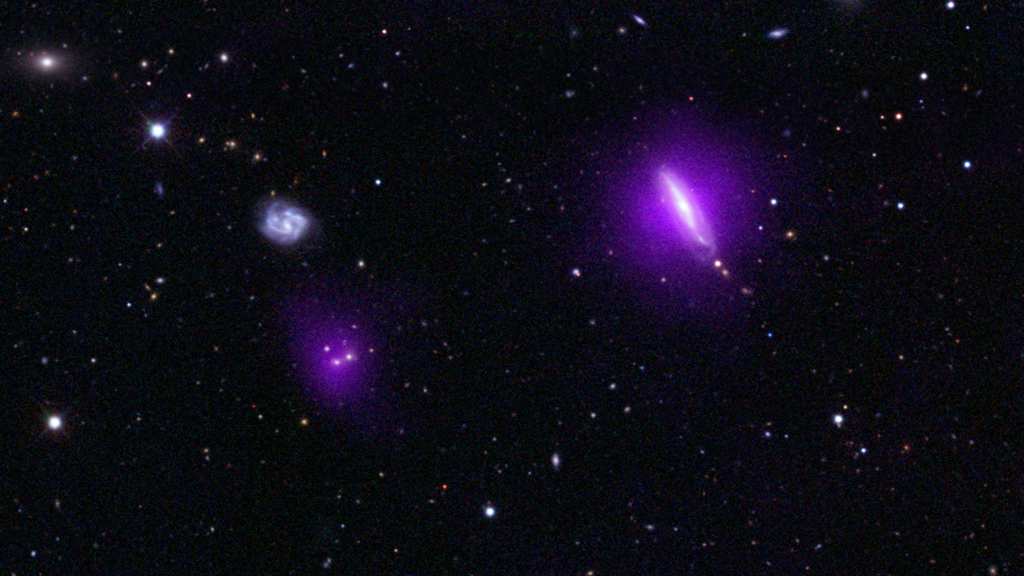
 Credit: NASA/JPL-Caltech
Credit: NASA/JPL-Caltech
On the Black Hole Hunt
NuSTAR, the Nuclear Spectroscopic Telescope Array, is NASA's new high-energy satellite telescope, uniquely capable of imaging the Universe at extremely high X-ray energies. This capability is important for pinpointing black holes. Black holes often produce both high- and low-energy X-ray emission through accretion, but the low energy emission can be blocked by material near the black hole, while higher energy emission can penetrate through this material to be seen by NuSTAR. NuSTAR is thus a black hole hunter, and a very successful one at that, as shown in the image above. This image is an optical image of a group of galaxies; in purple, the image obtained by NuSTAR, showing tell-tale high energy emission from black holes contained within the galaxies. These black holes were found by NuSTAR serendiptously through targeted observations at these particular galaxies. So far, NuSTAR has discovered 10 black holes, with many more to come from new observations and through mining the ever-growing NuSTAR archive.
Published: September 9, 2013
<
HEA Dictionary ● Archive
● Search HEAPOW
● Other Languages
● HEAPOW on Facebook
● Download all Images
● Education ● HEAD
>

Each week the HEASARC
brings you new, exciting and beautiful images from X-ray and Gamma ray
astronomy. Check back each week and be sure to check out the HEAPOW archive!
Page Author: Dr. Michael F. Corcoran
Last modified Monday, 26-Feb-2024 17:22:44 EST


